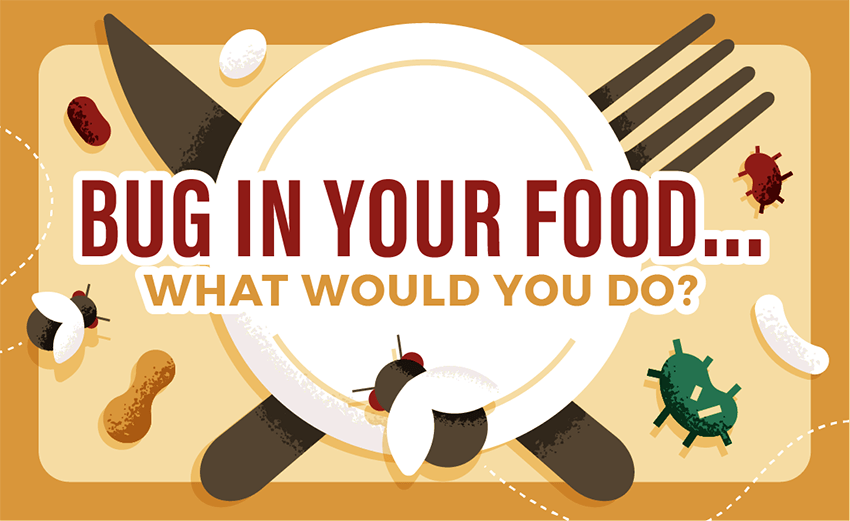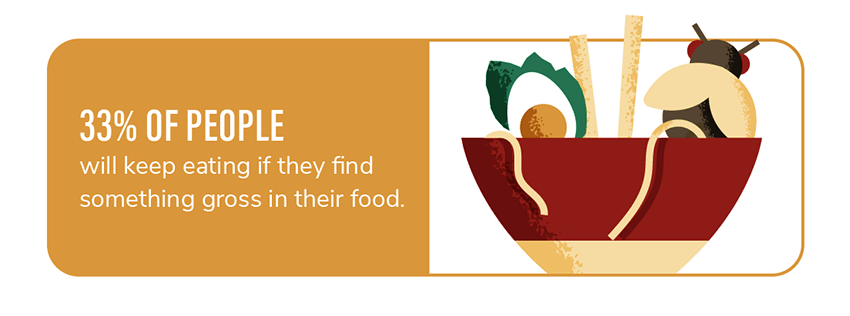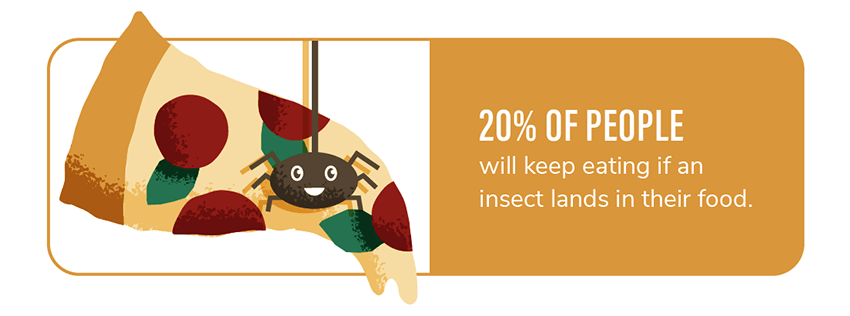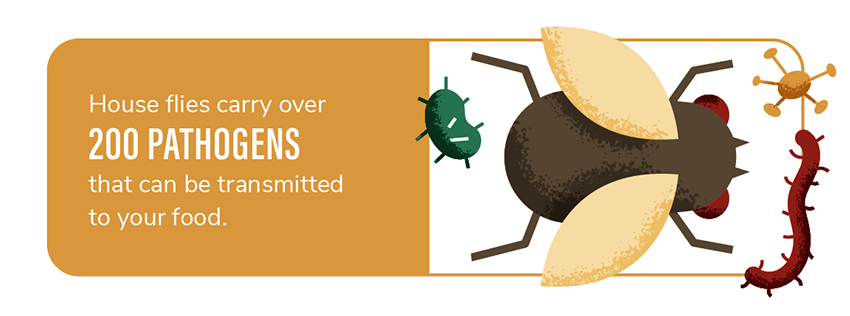It's happened to everyone—when a pesky bug or mysterious hair ends up in your meal. It's not a question of whether it's happened, it's what do you do next? Because bacteria is all around us, food cleanliness is a major player in preventing foodborne illness. Blissfully unaware, the general public may not understand just how many germs can be transmitted with a simple food "intruder".
Food Cleanliness
In a quest to see how seriously people take food cleanliness, we asked 1,000 Americans what their next step is if they discover something gross in their food. Shockingly, we found that 33 percent of people will simply keep eating, whether it's because they don't waste a meal or they aren't bothered by the "gross" factor.
So, what are some of the gross objects found in our food? While there have been horrifying instances like the infamous finger in the Wendy's chili to a razor blade found in a Wal-Mart ice cream, these occurrences are pretty rare. Let's check out some of the more common, everyday examples and what the average person's next step is.
Insect In Food
All it takes is one single insect to make you feel uneasy with the germs that may have landed with it. We found that 20 percent of people will keep eating if an insect or bug lands in their food. An even larger amount—40 percent of people will simply pick it out and keep eating.
Flies love to land on our food—more often than we'd like. When a fly touches down on your long-awaited sandwich, it begins exploring new terrain for food. Dana Nayduch, a molecular biologist at the US Department of Agriculture, says if it deems the substance meal-worthy, the fly will regurgitate saliva onto the surface.
Since flies don't have teeth, they spurt saliva from a snout-like mouth to liquefy food, which can then be sucked in and swallowed. Gross, right? This process begins just seconds after it lands, and the fly might even defecate as it lands on your food. If you're wondering how this affects the cleanliness of your food, house flies carry over 200 pathogens including bacteria, viruses, fungi, and more.
Don't freak out just yet—Food and Drug Administration actually allows manufacturers to include some bugs in their food products without repercussion. According to the FDA, low levels of bugs and other defects pose no inherent hazard to your health.
Hair In Food
Bugs or flies aren't the only gross things that can transfer germs to harbor within your food. Finding a hair in your food is one of the most unappetizing sights to see during a meal, especially if you're not sure who's hair it is.
When asked what people do if they find a hair in their food, the results were surprising. Let's be honest—sometimes it's difficult to determine whose hair it is, especially if you're eating out or dining at a restaurant. In a scenario where people assume it's their own hair, 44 percent said they'll just pick it out and keep eating, while 14 percent of people end up throwing their food away and wasting a perfectly good meal.
Although finding a strange strand of hair in your dish seems gross, it's unlikely to cause any health problems. In fact, hair contains an amino acid called L-cysteine that's actually used as an additive in food to enhance flavor or freshness. Believe it or not, hair is digestible and a single strand of hair won't hurt you.
The FDA's Food Defect Action Levels states that the presence of hair in food is one of the "natural or unavoidable defects in foods that present no health hazards for humans." Luckily for us, hair in food is more of a quality than a food cleanliness or safety issue and poses no health risks. The FDA also has no reports of people getting sick from swallowing a hair found in their food (if you happen to miss a pesky strand).
Many of us have experienced a foodborne related illness at some point—whether that's minor stomach pains or a more serious case of food poisoning. Food safety is important to be sure the food we eat is free of contaminants, like harmful bacteria, viruses, toxins, or chemicals.
Because food can be contaminated at any point in the production process, it's crucial everyone does their part, including us as consumers. From the producer to the consumer, keep reading below to find some of the best ways to avoid harmful contaminants and exercise good hygiene before you take down a meal.
While a small fly or single hair in your food isn't the end of the world, keeping food cleanliness top of mind is important. When preparing your meal and practicing kitchen safety, be sure you have a design with kitchen cabinets you absolutely love.
Sources: Food Insight | FDA | Flourishing In Filth | SmartSense






























